1950s
In the 1950s there were two big clubs in the city of Leverkusen with a population of less than 100,000: Sportvereinigung Bayer 04 Leverkusen and Turn-und Spielverein 04 Leverkusen. Bayer, as the club was known exclusively in the vernacular at the time yearn for competition and success while TuS stood more for amateur sport without losing sight of competition. Both clubs had a handball, fistball and athletics departments. Football and boxing were established at Bayer and artistic gymnastics and fencing were pursued at TuS 04. The small city of Leverkusen blossomed into a sporting city and is known worldwide through its athletes and the Bayer works.
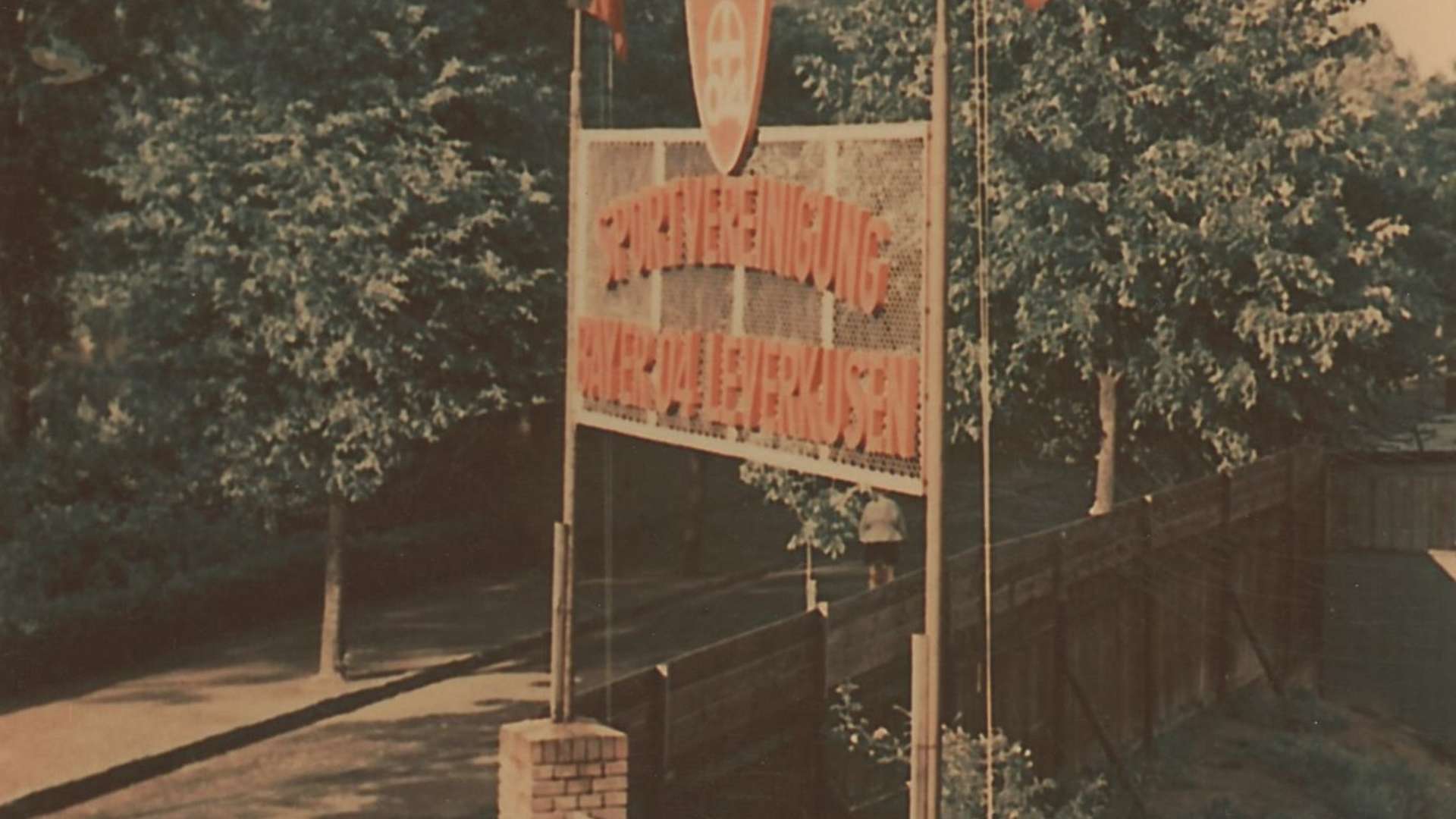
Main entrance to the Am Stadtpark Stadium at the start of the 1950s.
Our footballers finally succeeded in achieving the long-awaited step up - promotion to the Oberliga West bound up the chance of playing the big football clubs like Schalke 04, Rot-Weiss Essen, Borussia Dortmund and Fortuna Düsseldorf. On matchday 10, the Bayer eleven go top of the Second Oberliga West for the first time with a 2-0 win at the Stadtpark Stadium against TuRu Düsseldorf and they retain that position to the end of the season. On 8 April 1951 we're finally there: At home in front of 5,000 fans Fortuna Köln are sent packing with a 5-2 defeat and promotion is sealed. The chairman of the club Dr Fritz Jacobi honours his team with a big laurel wreath and presents it to the captain Hans Frömmel. During the game a huge banner is held up reading 'Bayer 04 Leverkusen in the Oberliga'.
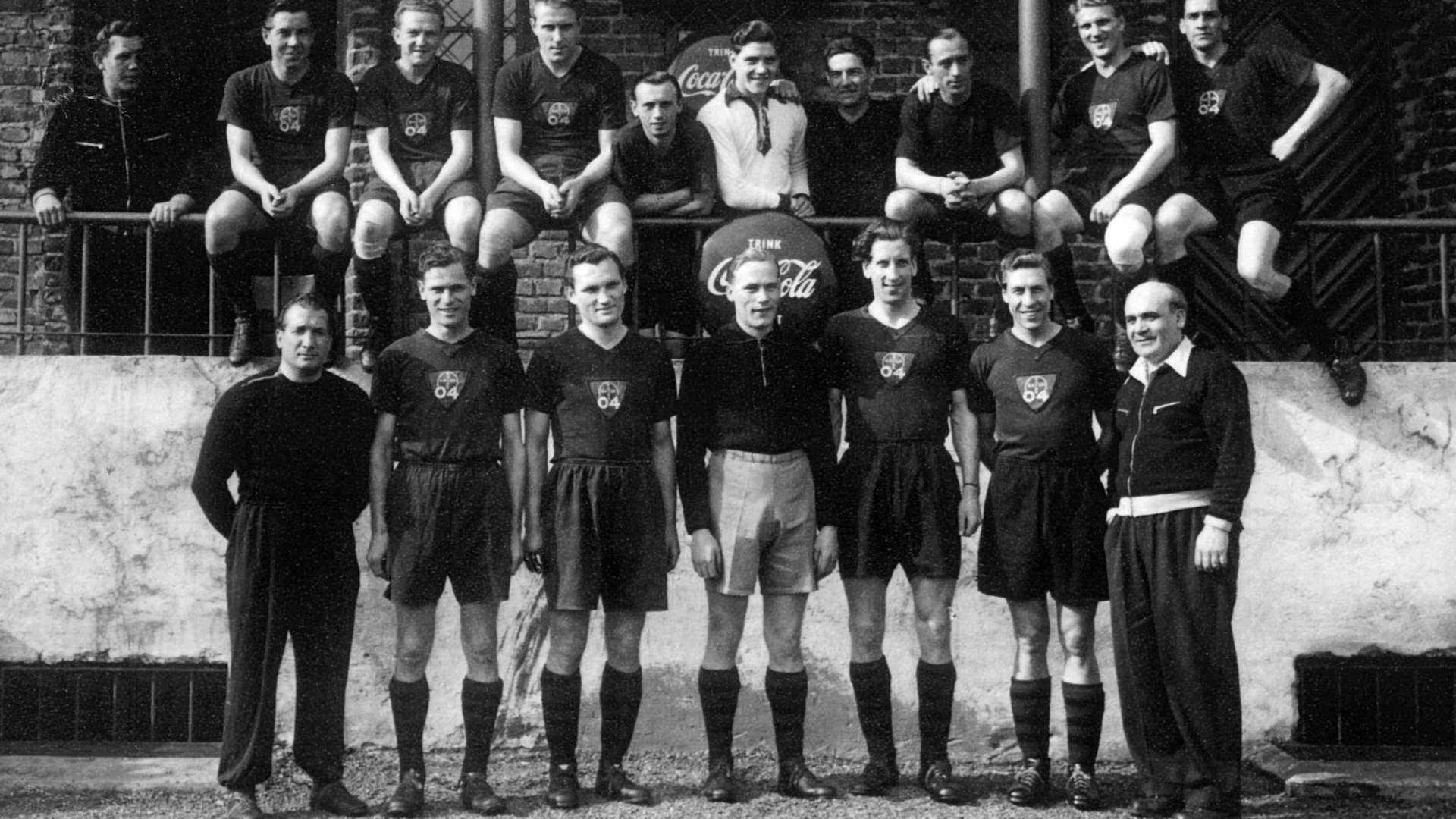
The 1951 league champions in front of the 'Am Stadtpark' clubhouse. Back row l. to r.: Masseur Hans Bochniak, Heinz Papenhoff, Hans Flohr, Paul Wiorek, Jakob Kaiser, Heinz Müller, Hans Steingans, Reinhold Pütz, Heinz Spikofski, Theo Kirchberg, Front row l. to r.: Coach Raymond Schwab, Hans Frömmel, Richard Job, Helmut Rennen, Peter Röger, Emil Becks, physio Paul Harig
Hans Frömmel, Emil ‘Bubi’ Becks, Heinz Papenhoff, Paul Wiorek, Richard Job and Theo Kirchberg are all household names in Leverkusen at the time. Most of the team work for Bayer and they are given time off from midday on Tuesdays and Thursdays for training. The new season in the Oberliga gets off to a promising start and Bayer 04 are quickly established in that league. Strengthened through the arrival of players like Fredy Mutz, Fritz Tiede and Walter Nußbaum, the team is only beaten for the first time on matchday 11 and the club is not involved in relegation battles for the next two years. Fredy Mutz makes a name for himself and becomes the automatic choice in goal for Bayer 04 for the next ten years.
In 1954/55 Bayer 04 knock on the door of the German Championship finals for the first time. In the week of celebrations celebrating the 50th anniversary of the club a range of sporting competitions are accompanied by a friendly against the reigning German champions with a 4-0 win against Hannover 96. The whole of Leverkusen is full of hope for the new season. The race with the two rivals Rot-Weiss Essen and SV Sodingen remains open for a long time. Bayer 04 beat Borussia Dortmund 3-1 at home and send local rivals FC Köln packing with a 4-0 win in April 1955. A week later, with three games to go, there is a showdown with second-placed SV Sodingen. At the Stadtpark Bayer 04 are 2-1 in the lead at half-time and have the chance to go further ahead from the penalty spot on 56 minutes but Walter Nußbaum fails to convert. Sodingen then equalise and Bayer are unable to find the winner. Sodingen hold on to their lead in the table to the end of the season. Bayer 04 end a very successful campaign in third place.
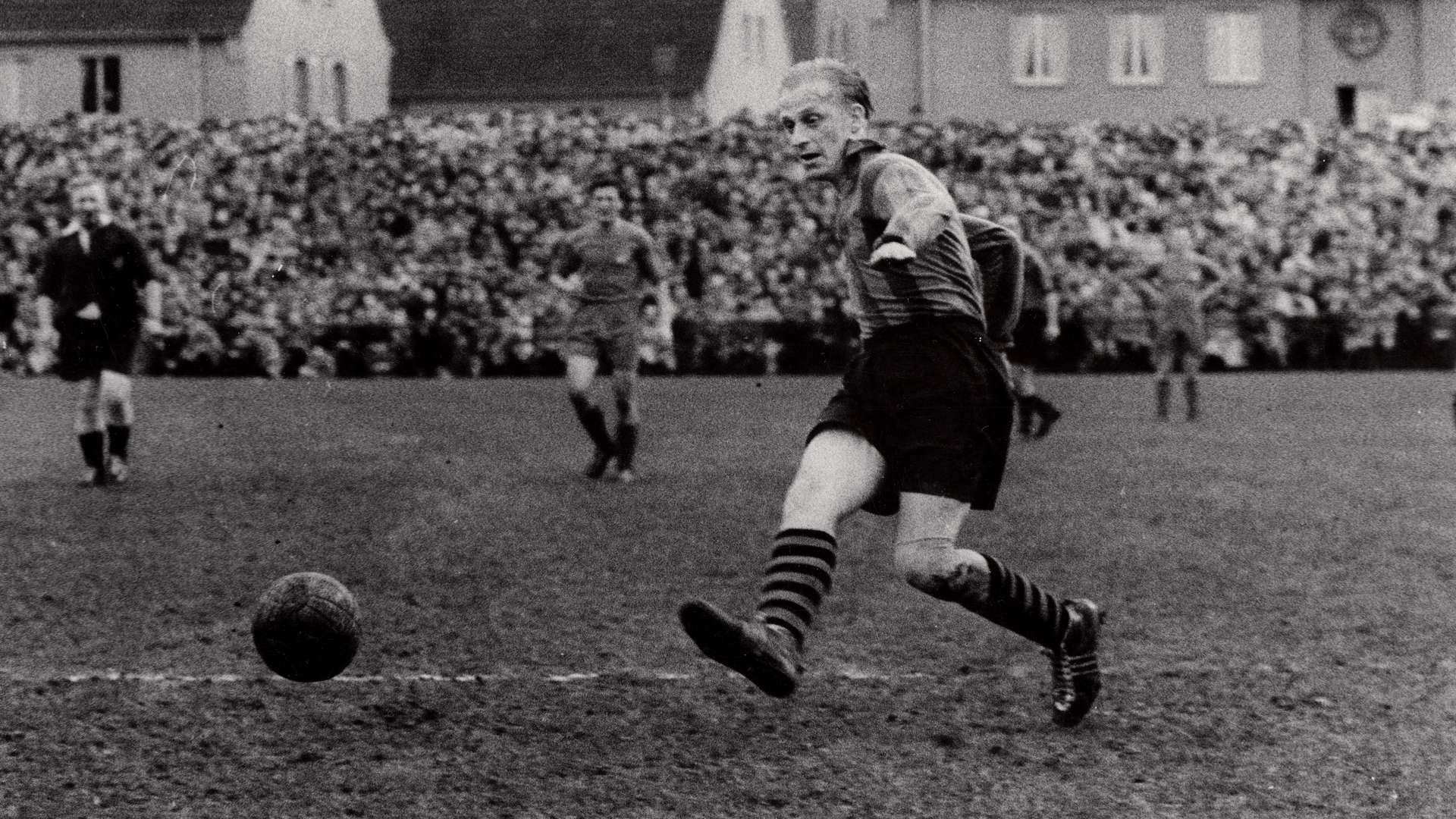
Bayer 04 beat FC Köln 4-0 at home on 11 April 1955. Central striker Fritz Tiede strikes for goal.
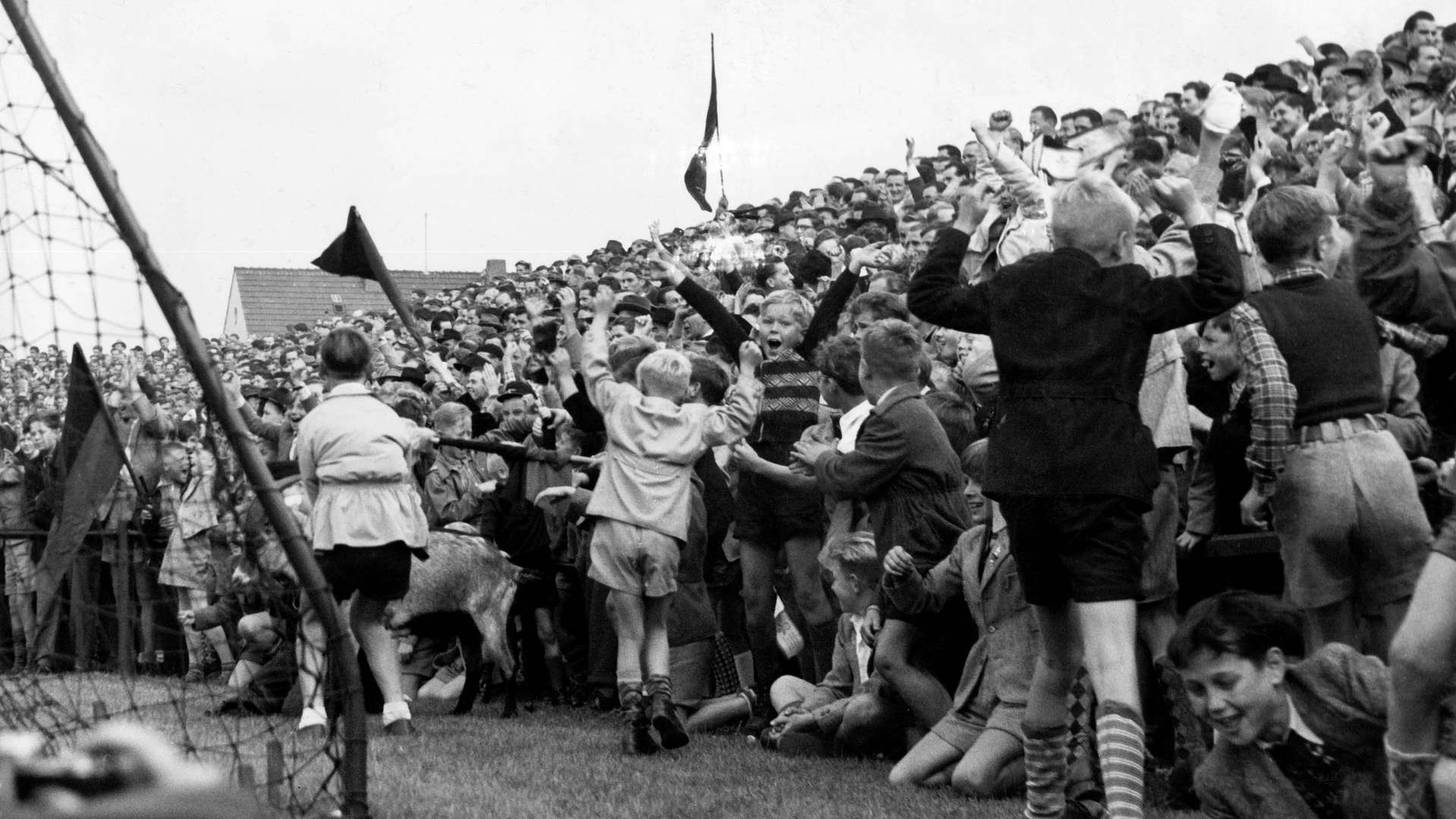
And the Bayer 04 home end celebrates a goal.
A year later brings a terrible season leading to relegation for the first time in the club's history. To the end of the 1950s Bayer are in the second division for the first time. In spite of the sporting situation, April 1956 sees the start of building work on Bismarckstraße, at the end of the A1 autobahn at the time, for a new stadium - against the resistance of many traditionalists. The smaller of the two pictures in the old Stadtpark is built on for the Lise Meitner Grammar School. The old main pitch remains in use and is still needed by the footballers.
The Ulrich Haberland Stadium, named after the great sport promoter and general director of Bayer AG, is officially opened on 2 August 1958. Fortuna Düsseldorf are the first opponents and the two captains Fredy Mutz and Erich Juskowiak leave the two teams onto the new pitch.
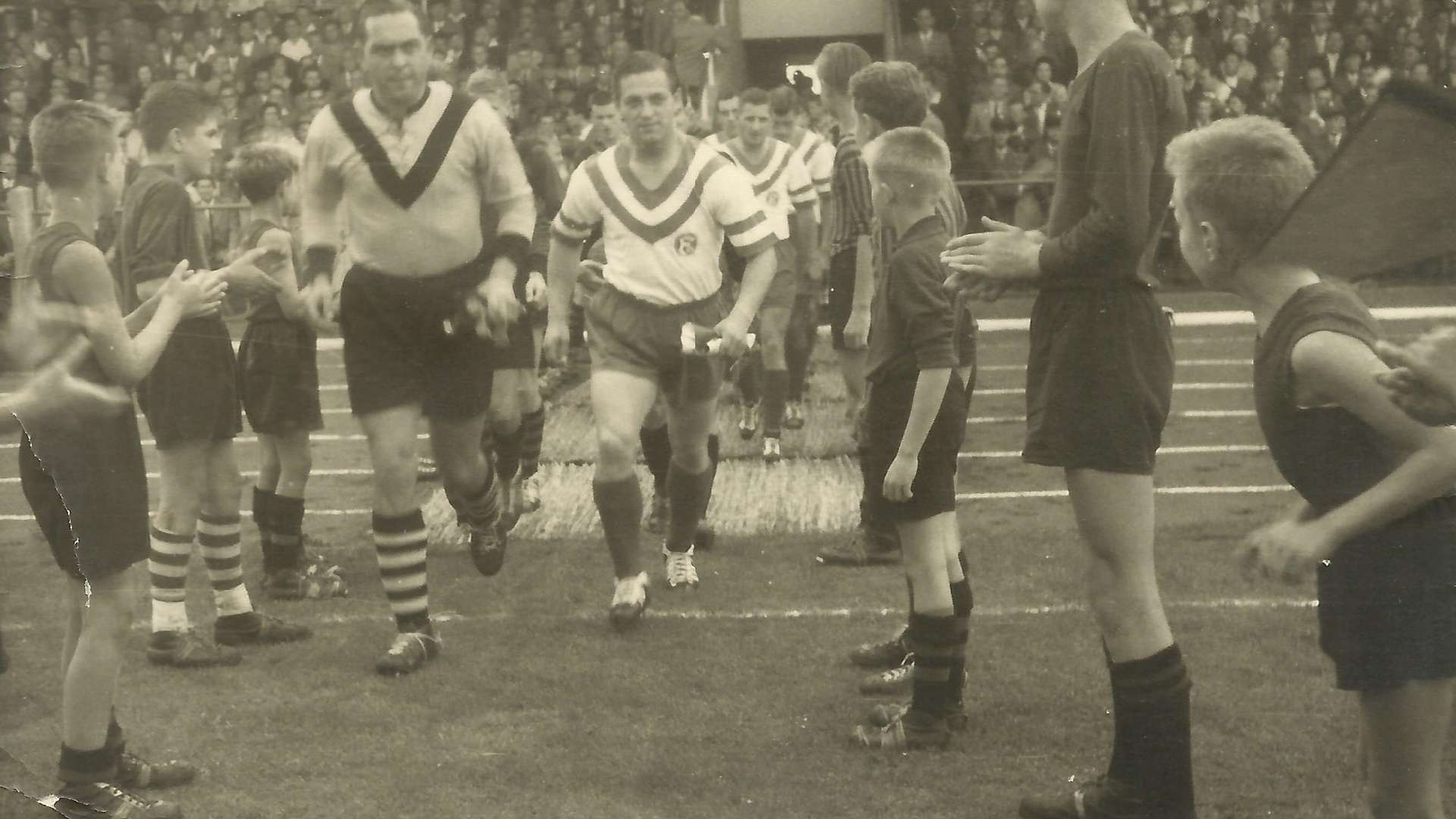
Teams run on at opening match at the Ulrich Haberland Stadium
The pitched posed problems in November. In a game against FC Köln there was so much damage that the Bayer eleven had to return to the old Stadtpark to the end of the season. They finally occupied the home ground on Bismarckstraße in the 1959/60 season that has lasted till today. However the performances of the Bayer players resulted in their losing sympathy. The 20,000 capacity stadium rarely attracted more than 3,000 spectators. The atmosphere is almost ghostly due to the ash running track around the pitch and could not be compared with the atmosphere at the Am Stadtpark football stadium.
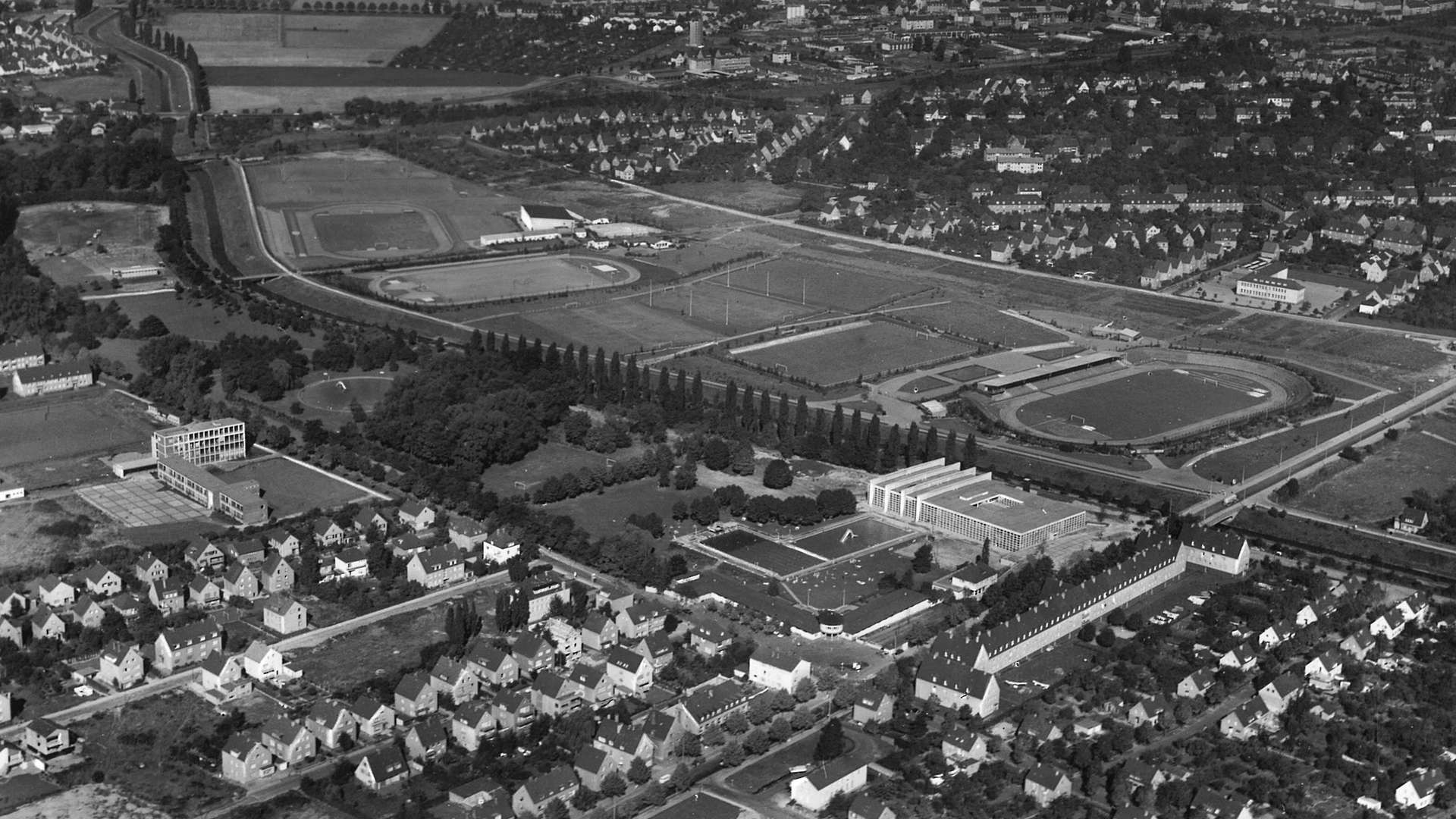
View of the Ulrich Haberland Stadium in 1958, right and centre. Left in the centre is pitch one of the Am Stadtpark sports ground and the old clubhouse. In the background is the Kurt Rieß ground and in front the VfL Leverkusen pitch.
Four home-grown players stand out in the 1950s. Horst Stollenwerk, a nippy right-winger, played for the first team from 1953 to 1961 and almost made our fans forget his predecessor Theo Kirchberg. Werner Röhrig, the midfield strategist and later captain, plus Günter Haarmann, the goalscoring defender, carried on playing well into the 1960s. Heinz Höher is an important part of the Bayer team from 1958. The Leverkusen born player, like the other three, has a significant influence at the start of the 1960s.
Sources:
- Walter Scharf – '50 Jahre Bayer 04 – Die Geschichte eines Sportvereins'
- Matthias Bauschen – '100 Jahre Bayer 04 – Die Geschichte eines einzigartigen Sportvereins'
- Werner Röhrig – Gesammelte Zeitungsausschnitte aus 100 Jahren Bayer 04 Leverkusen (Bayer 04 archive)
